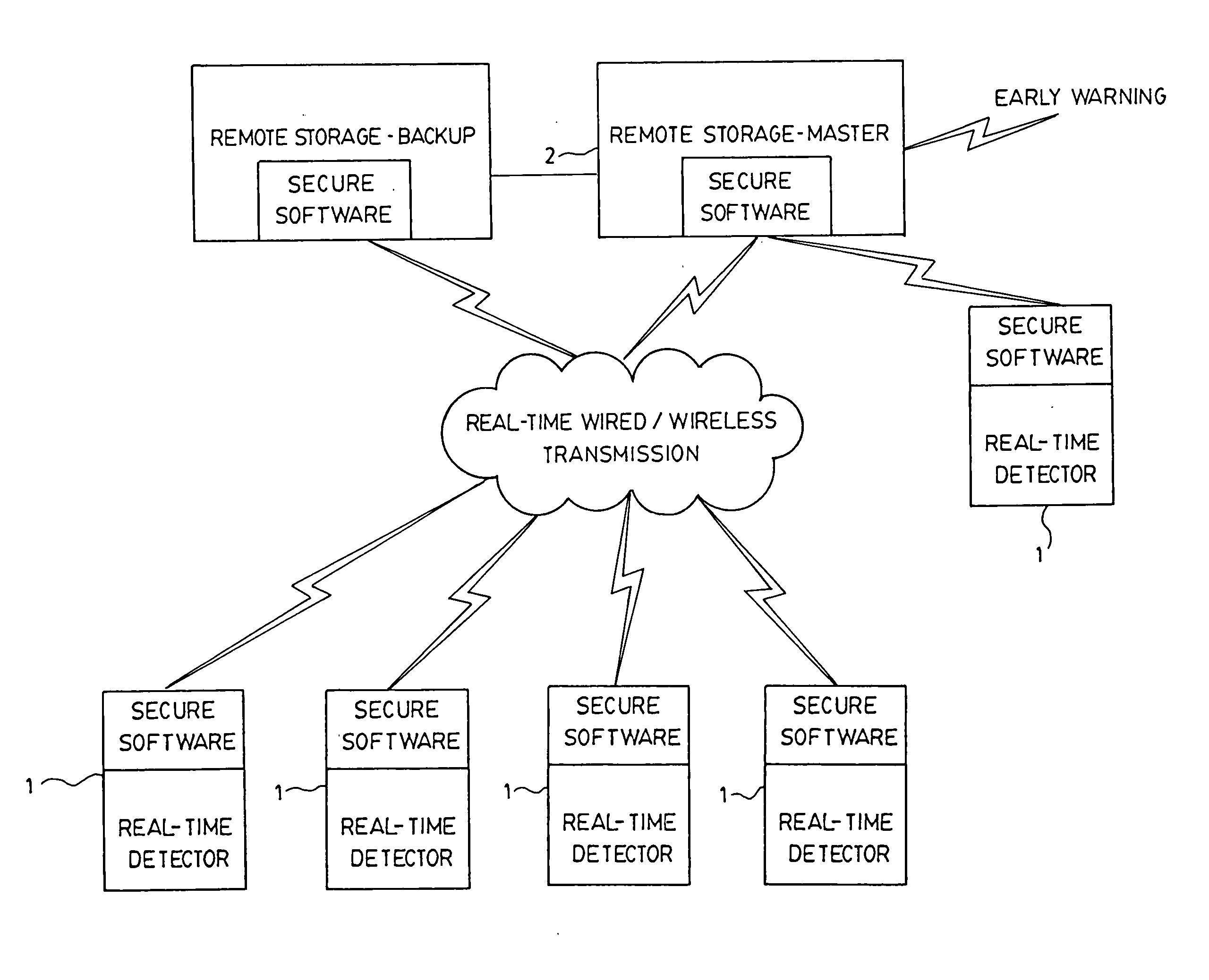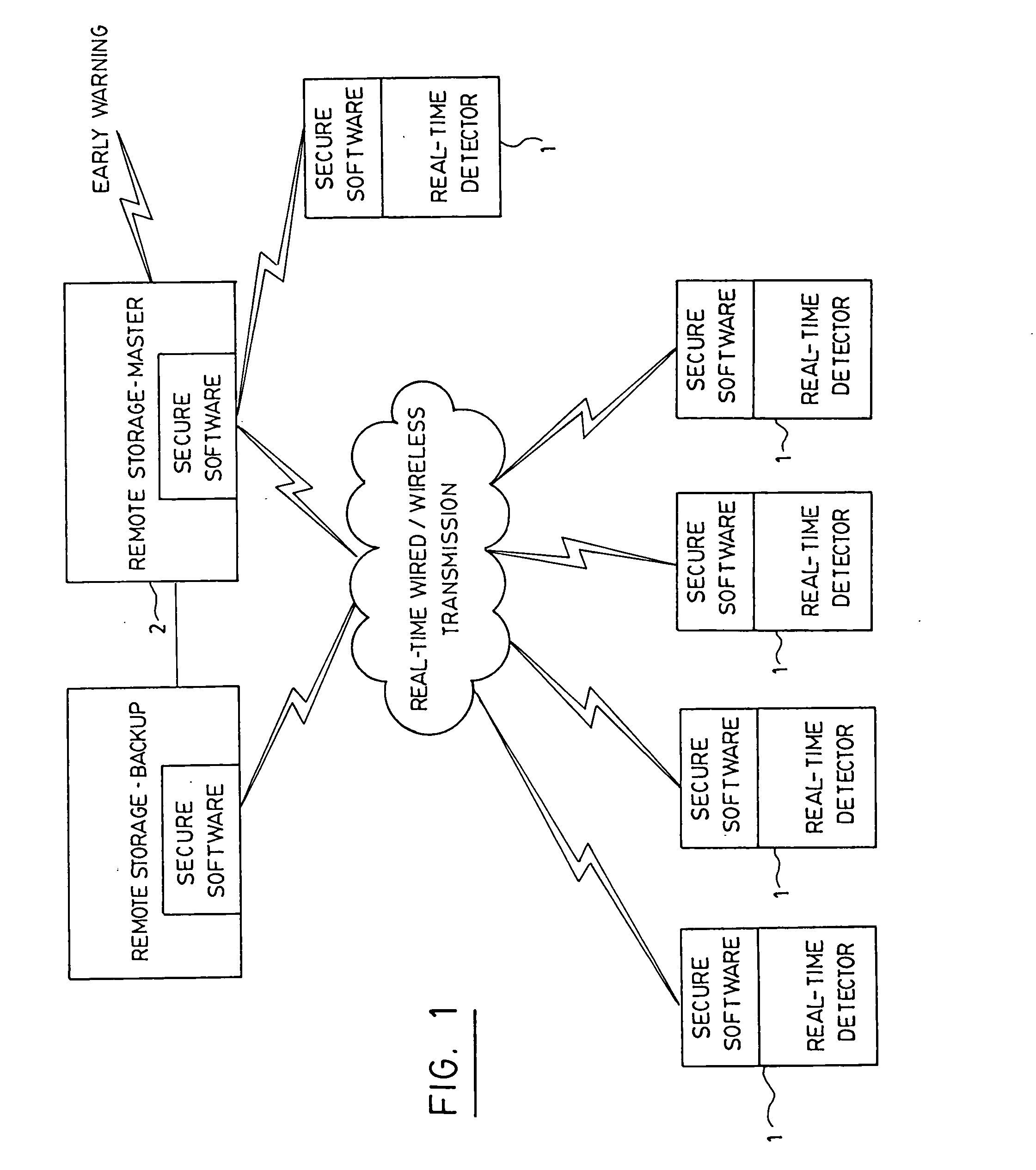System and method for real-time detection and remote monitoring of pathogens
a technology for pathogen detection and monitoring, applied in the field of system for real-time detection and monitoring of pathogens, can solve the problems of large problem scope, ineffective solution not available commercially, and inability to meet the needs of consumers, etc., and achieve the effect of improving accuracy
- Summary
- Abstract
- Description
- Claims
- Application Information
AI Technical Summary
Benefits of technology
Problems solved by technology
Method used
Image
Examples
Embodiment Construction
[0078] In the context of the present invention, “Real-time detection” means direct pathogen detection in less than 30 minutes.
[0079] In its preferred embodiment, the invention represents real time pathogens detection (bacteria, viruses and protozoan) in substances (liquids, gases and other matter).
[0080] The system can be used for environmental monitoring (water and air), food safety, life sciences (early infection detection in humans and animals) and anti-terroist readiness among others.
[0081] Besides pathogens, the system can include other (secondary) real-time contaminant detectors: [0082] Chemicals (mercury, arsenic, sulfur, mustard, etc.). [0083] Biochemical Toxins (Ricin, Microcystin, Teradotoxin, etc). [0084] War agents (nerve, blood, choking, blister agents). [0085] Radioactive Material (uranium-238, iridium-192, strontium-90, cobalt).
[0086] Benefits of this invention are shown in a water quality-monitoring example which follows. However, these benefits in general transc...
PUM
 Login to View More
Login to View More Abstract
Description
Claims
Application Information
 Login to View More
Login to View More - R&D
- Intellectual Property
- Life Sciences
- Materials
- Tech Scout
- Unparalleled Data Quality
- Higher Quality Content
- 60% Fewer Hallucinations
Browse by: Latest US Patents, China's latest patents, Technical Efficacy Thesaurus, Application Domain, Technology Topic, Popular Technical Reports.
© 2025 PatSnap. All rights reserved.Legal|Privacy policy|Modern Slavery Act Transparency Statement|Sitemap|About US| Contact US: help@patsnap.com



